By Alex Trukan
Moving the ball forwards is one of the essential requirements to create goalscoring chances and finish. In order to be able to secure the ball in more advanced positions, forward runs without the ball are needed. Forward runs are for example used to play the ball into the striker going in behind the opposition back line or to pass the ball into overlapping fullback. It is not only where the run arrives and which spaces it targets what is essential. In addition, it's worth to considering the starting position of it. Forward run can start in line with the last defender, between the lines or in front of the defender. One of the most popular runs recently has been a movement from deeper positions, crossing the units of the opposition and arriving in beyond. This poses a problem for defenders in terms of marking responsibilities as well as decision making whether to leave or follow the runner.
One of the key aims of runs from deeper positions is to create space for other players. Primary example of this happening is when a central midfielder makes a run forwards to take the opposition’s centre backs away and thus create space for midfielder to run into. The run starts when the ball arrives in the central areas and player on the ball is not under pressure. This might be also exploited by another midfielder dropping into the gap created.
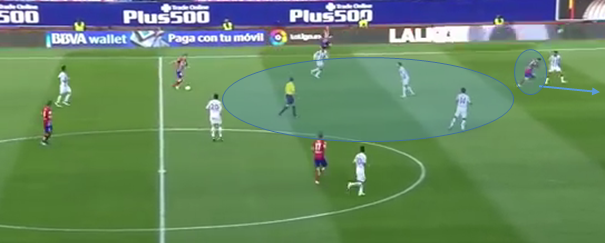
Another example is when a central midfielder makes a forward run into the wing to take the full back away. This creates two main opportunities. Firstly, the ball can be played directly into the player making a run in beyond the defenders. Secondly, it can be passed into the wide midfielder who will have more time until full back/centre midfielder pressurises him.
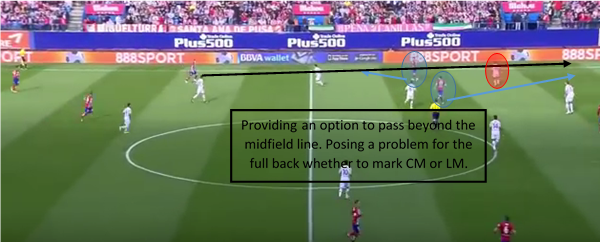
This type of central midfielder’s run can be made even from deeper, central positions. This might further drag opposition’s midfielder out of position what will create opportunity to play through the middle areas. Timing of this run (adjusting pace) is crucial to arrive in the exact moment when the ball can be played forwards.
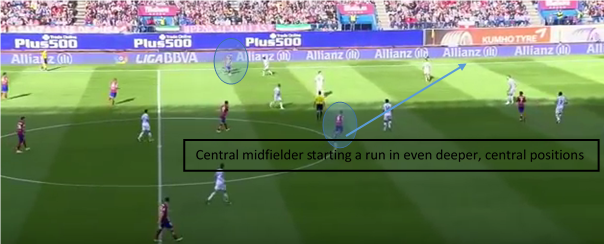
Opposite movement to that is when a winger makes forward run from deep position and central midfielder comes shorer (into wide area) to receive the ball off the full back. In this situation it is usually more beneficial to pass the ball long to the winger or striker as central midfielder coming short will be often marked tight by the opposition. This type of movement creates space between opposition midfield and back units.
[wpsharely id="2988"][/wpsharely]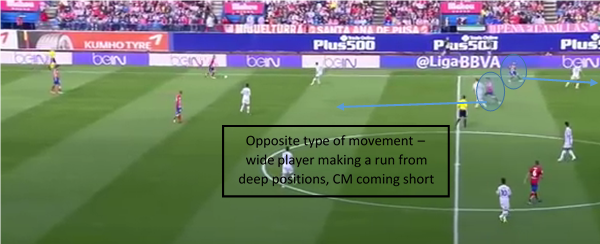
Another, more classical type of run from deep positions is when a central midfielder/striker drops towards his own goal, get marked by one of the opposition midfielders and then make a forward run in behind the back line. This will cause a problem for the midfielder whether to follow the run or leave it for the centre back. It is beneficial to involve 2/3 players starting in different positions in this type of run. The difference between this type of a run and a classical striker’s forward run is that the starting position is in front of the opposition back line (i.e. between units or by the midfielders).
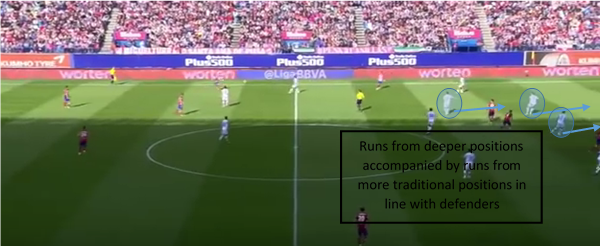
Finally, forward runs from deep positions can be made by defenders. In particular, full backs are often involved in this type of an action. As the ball is on one side of the pitch, a full back from the opposite wing can recognise the space in front of him to make a forward run. This type of play should be finished with a cross into the box which will be ‘closed’ by a full back on the back post.
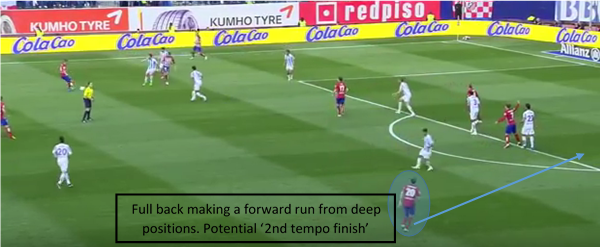
Forward runs from deeper positions provide useful alternative for classical runs starting in line with defenders. The key requirement to make this type of movement effective is to combine it with traditional runs. This will focus defenders on the other players involved, whereas the action can be finalised by a player running from ‘deep’ positions.
By Alex Trukan, Development Coach, Nottingham Forest
@AlexTrukan


